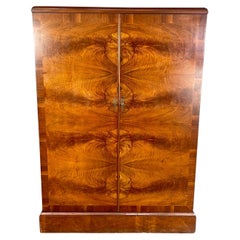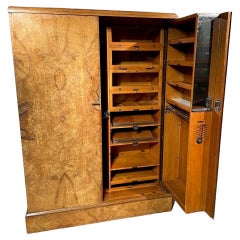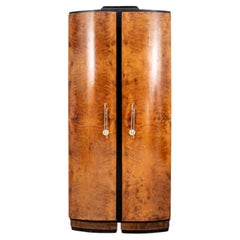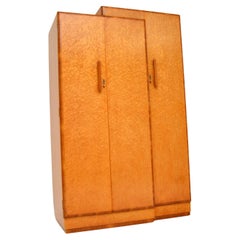Wardrobes and Armoires
1920s English Art Deco Vintage Wardrobes and Armoires
Walnut
1910s British Art Deco Vintage Wardrobes and Armoires
Walnut
Early 20th Century Art Deco Wardrobes and Armoires
Walnut
19th Century French French Provincial Antique Wardrobes and Armoires
Wood
1920s British Art Deco Vintage Wardrobes and Armoires
Birdseye Maple, Walnut
1930s British Art Deco Vintage Wardrobes and Armoires
Wood, Walnut
1930s British Art Deco Vintage Wardrobes and Armoires
Wood, Walnut
1930s British Art Deco Vintage Wardrobes and Armoires
Wood, Walnut
Mid-20th Century Czech Art Deco Wardrobes and Armoires
Wood, Pine
18th Century Belgian French Provincial Antique Wardrobes and Armoires
Brass
Mid-20th Century French Art Deco Wardrobes and Armoires
Metal
1930s British Art Deco Vintage Wardrobes and Armoires
Wood, Walnut
Early 1900s Czech Art Deco Antique Wardrobes and Armoires
Walnut
19th Century French French Provincial Antique Wardrobes and Armoires
Brass
1950s French Art Deco Vintage Wardrobes and Armoires
Brass
18th Century French French Provincial Antique Wardrobes and Armoires
Iron
1920s Dutch Art Deco Vintage Wardrobes and Armoires
Glass, Macassar, Oak
Early 19th Century French French Provincial Antique Wardrobes and Armoires
Wood
1930s Swedish Art Deco Vintage Wardrobes and Armoires
Birch, Mahogany
Antique and Vintage Wardrobes and Armoires for Sale on 1stDibs
When shopping for antique and vintage wardrobes and armoires for your home, there are several things to keep in mind, not least of which is question number 1:
What is the difference between an armoire and a wardrobe?
The difference between an armoire and a wardrobe is actually simple: An armoire is merely an ornate wardrobe. A wardrobe is a tall, streamlined storage cabinet that usually has some combination of drawers, shelves and hanging rods.
Antique and vintage armoires, on the other hand, are freestanding, heavy wooden structures that typically feature decorative metal hinges and pictorial carvings. Armoires are large cabinets that aren’t outfitted with the varied storage features that wardrobes now commonly have. Armoires often have one or two doors and a hanging bar and allow for quick access. Whether a minimalist mid-century modern wardrobe or grandiose Victorian-era armoire is the right fit for you, both are highly functional furnishings and can be a smart storage solution.
Armoires have been around since medieval times, and initially they may have housed weapons and armor. In their early days, armoires were often adorned with elaborate carvings and lavish paintings, particularly in Renaissance-era France. During the 18th century and later, armoires were widely known as “presses” for hanging clothes, and they were so large that they swallowed up the room where they stood.
In today’s modern homes, an antique armoire can be a striking, architectural work of art amid comparably unadorned furnishings. Whether you’re using your piece in the kitchen for cookware or as a food pantry, in the bedroom for clothes or in the living room as a media console, it will likely become a lovable focal point.
The evolution of the armoire can be seen in today’s corner wardrobes, which may rest on an asymmetrical base to account for corner placement, and even mirrored wardrobes, which feature a mirror affixed to the inside panel of one of the doors for convenience. Contemporary wardrobes commonly feature additional sliding trays and drawers and hanging space for clothing or linens, and the cabinet doors make them ideal for concealing televisions and computer monitors when such devices aren’t in use.
When choosing the right wardrobe or vintage armoire for your home, it’s good to have the following in mind: What are you planning to store in it? How much of what you’re storing will need to be housed in it? It should be big enough to accommodate your needs. What is the size of the room where your wardrobe or armoire will live? A large new piece of furniture in a modest space can easily become a hindrance if you have to navigate your way around it during your daily routine, so be mindful of the area you'll need in order to move freely.
Whether you are looking for an antique walnut armoire or a simple contemporary wardrobe, find the right piece for your home today on 1stDibs.





